When the Italian police was serious. The panther of legend, the Prancing Horse car protagonist of many chases of bad guys in the 1960s, that almost always in the hands of agent Armando Spatafora became the nightmare of Rome's underworld, is on sale.
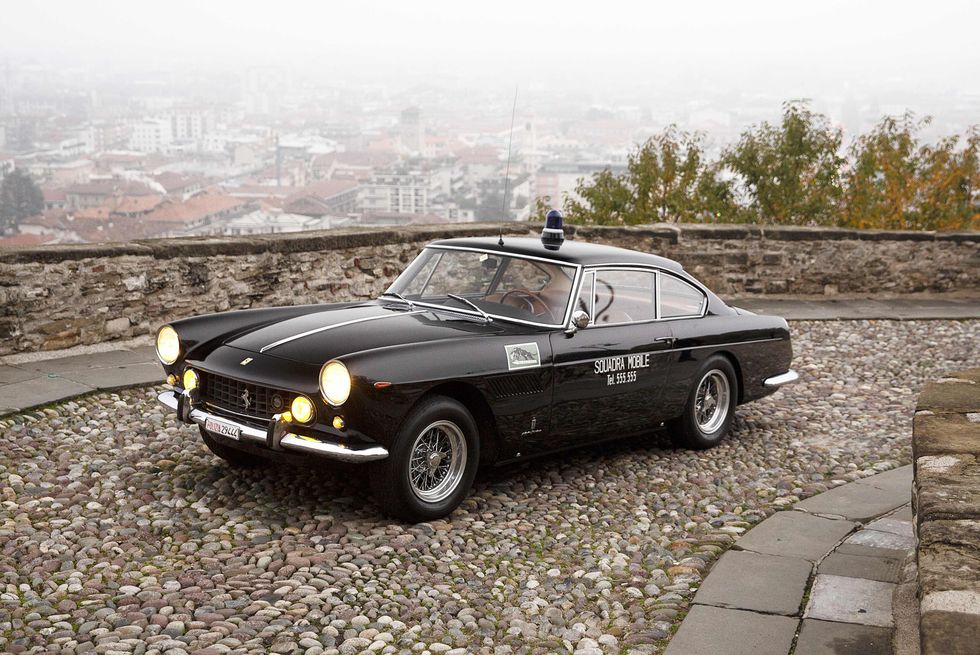
1962 Ferrari 250 GTE police car had a glamorous past.
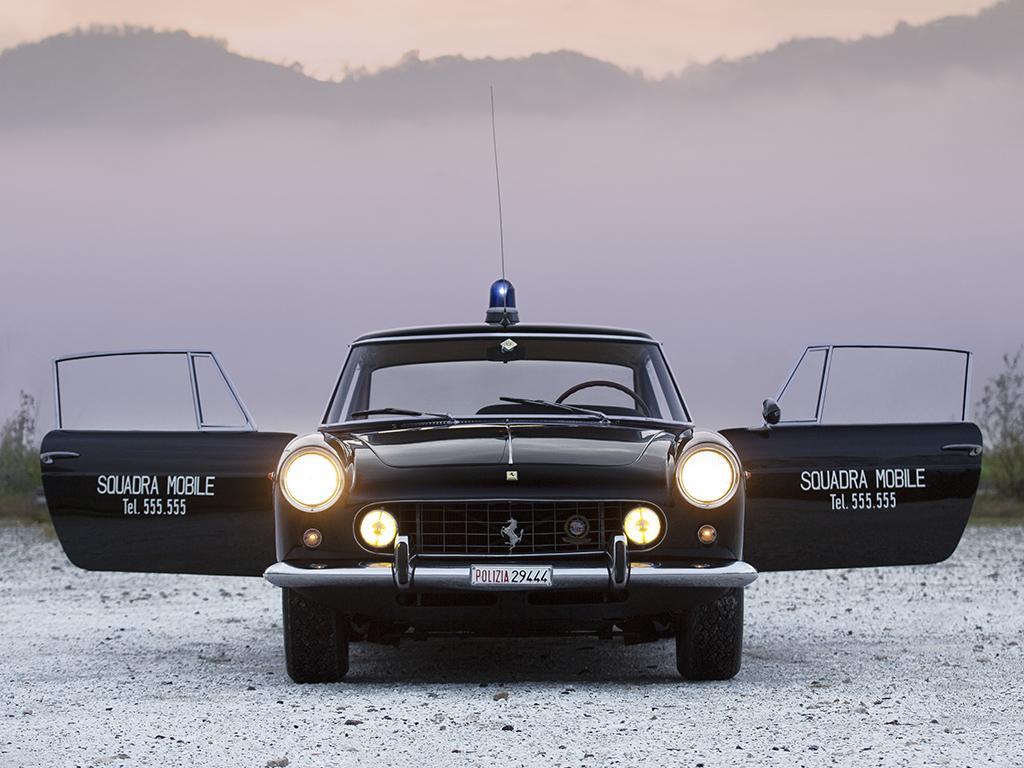








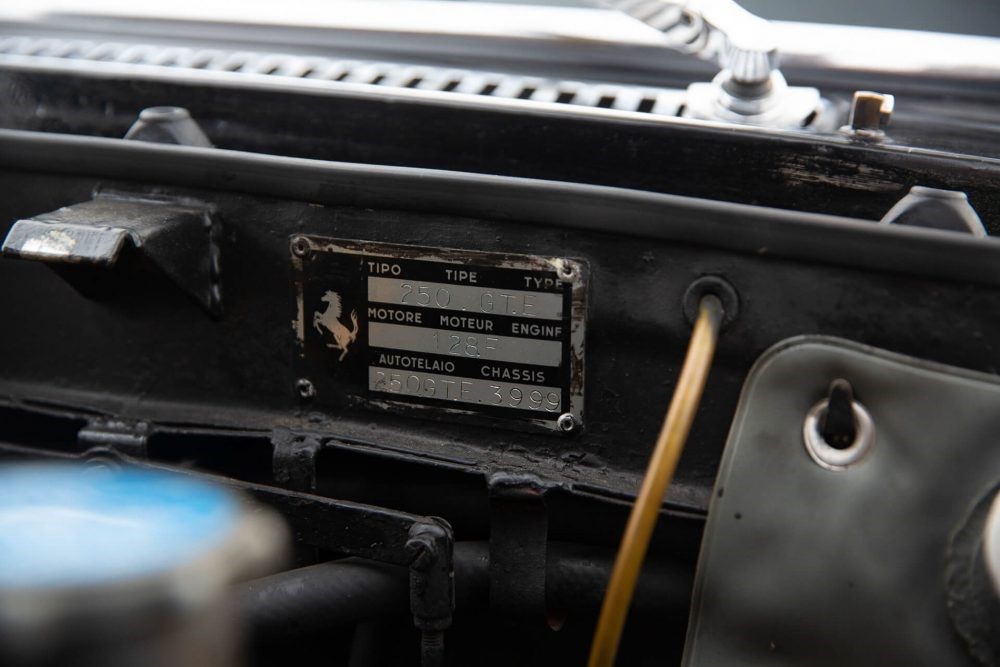
The Ferrari 250 GTE 2+2, built between 1959 and 1963, was Maranello’s first large-production four-seater and is a very desirable car. But the example you see here is even more special. This GTE was one of two specially made for the Rome police department, it has a great backstory.
It is in excellent original condition and, yes, it still has the flashing blue light, siren and police livery, but its provenance rivals that of any racing Ferrari.
This Ferrari 250 two-plus-two was built in 1962 specifically to catch high-speed gangsters in Rome. In the 1960s, in fact, crime in Italy was usually followed by a car chase.
Italy's highway police have used several supercars as high-speed interceptors, up to and including a Huracán LP610-4 that Lamborghini loaned to the Polizia Stradale back in 2014.
Granted, in the pantheon of Ferrari 250s a 2+2 GTE variant occupies a lowly position in the hierarchy, worth only a small fraction of the eight figures a 250GTO commands.
Unlike that Huracán, the 250 didn't become a police car for publicity reasons. In the early 1960s, Roman criminality was becoming more and more arrogant and with less and less scruples; it had now outrun the police. Thus Rome's police force was struggling to catch fleeing criminals, skilled, wild and unscrupulous bandits who were often driving stolen high-powered sports cars - Alfa Romeo and Maserati driven by expert “pilots” who made you pay a high price for their services - capable of outrunning the Alfa Romeo 1900 sedans the police used as interceptors. Gangs of thieves and robbers became impregnable and violent, assaulting armored trucks, often shooting. We lived thrilling nights, made of robberies and thieves in houses.

In Rome in 1960 the police had only one "volante" (high-speed interceptor), an Alfa Romeo 1900 Super, black as all the police cars; the situation was becoming increasingly embarrassing (to say the least) for law enforcement. Embarrassed by the inability of his officers to apprehend these automotive gangsters, historical Roman police chief Vicari, an extremely charismatic man, organized a meeting with his Squadra Mobile—the high-speed pursuit team—in early 1962. On a rainy morning, the men of the "Mobile" had the opportunity to represent all their unease and helplessness, mainly due to the chronic lack of means or at least for their obsolescence. After the usual lukewarm responses (lack of funds, different priorities, etc.) Vicari, quite upset, asked them what was required to beat the criminals at their own game: «guagliò, ditemi che cosa vi serve per acchiappare i rapinatori». Mobile agents, gathered in the courtyard of the police headquarters, looked at each other intimidated like schoolboys in front of the principal. The visit of the police chief Angelo Vicari was already an exceptional event and then that so point-blank question. Nobody dared to answer. One of the senior officers present, Armando "Armandino" Spatafora, finally replied: "it would take a Ferrari." That voice startled everyone and the chief mentally marked it in the blacklist. Armando Spatafora was a well-known policeman perhaps also respected by the Roman underworld, a small man with a lively eye that the Capitoline crime identified with the nickname "Lynx". A man who, for years, has been wandering the streets in search of convicts, bandits, criminals. It seemed like an inappropriate joke. «Quelli corrono, dottò, noi zoppichiamo» (they run, sir, we limp), Spadafora stammered. In the face of this apparently absurd request there was a stunned silence in the meeting room but, to the surprise of the bystanders, the Prefect, evidently a man of extreme concreteness, looked at him darkly and replied: "you will be satisfied". It seemed a promise like many, but it was not.
The rest, rapidly, became history, with Vicari gaining permission from Italian president Giovanni Gronchi to purchase two Ferrari 250GTEs for police work. And the Ferraris arrived, in November, a personal gift from the commendator Enzo to the police. They had flashing lights and sirens, but the rumble could be heard hundreds of meters away. The plan got off to a poor start when the first of these, chassis number 3363, was doled out to an officer who destroyed that in a crash on the Roma - Civitavecchia Motorway just a few weeks later, during testing before it had entered duty in 1962. The chassis was disintegrated until the last piece in Maranello, as requested by the superstitious Enzo Ferrari.
The second car, chassis number 3999, became a myth. It was delivered to Rome’s Squadra Mobile in 1963 and assigned to driver Armando Spatafora, ‘one of Italy’s most revered and successful police officers’, for active duty as the lone Ferrari in service.
Spatafora was one of four officers selected for a high-speed driving course at Maranello, during which he stood out particularly by doing times worthy of a race driver. He and his three colleagues, Carlo Annichiarico, Dalmatio De Angelis and Giuseppe Savi, arrived in Maranello after 6 hours of travel aboard Armando's Fiat 500.
Both car and Spatafora soon acquired celebrity status after a series of spectacular high-speed chases, including one that involved chasing a Citroën down the Spanish Steps next to the Trinità dei Monti church in Rome.

Spatafora's exploits later became the inspiration for a spectacular 1977s low-budget Italian chase movie called “Poliziotto Sprint”.

Digitmovies via YouTube
The car was driven by a now legendary cop Armandino Spatafora and the film included a sequence with a 250GTE driving down the steps.
For the next six years Spatafora used the Ferrari on night patrol with great success and legend had it that beating him in a car chase was ‘a matter of prestige’ for Roman criminals. But Spatafora’s skills and the GTE’s 3.0-litre V12 making a top speed of more than 250kph, apparently, few did.

The Ferrari remained in front-line service until 1968, at which point it was transferred to the easier duties of making emergency blood deliveries to Naples at high speeds. (The official release on the car’s sale claimed it could cover the 140 miles between the two cities in just 50 minutes). It was retired in 1972 and sold at a government surplus auction to a businessman, Alberto Capelli, who kept it for more than 40 years, driving it extensively in Europe and even attending the Pebble Beach Concours d'Elegance in 2016. "We found it! We found Spatafora's car", years later the policemen in charge of retrieving it shouted on the phone when they finally identified it. The car will then be recovered by the police for its collection of historical vehicles and spent time in the Museum of Police Vehicles in Rome in via dell'Arcadia. Over fifty vehicles, including cars, motorcycles, mopeds and small tractors, to tell the combination of handcuffs and engines. The car was named after its great driver “Ferrari Spatafora” and was often protagonist of the police vehicles exhibitions.

Even now, underneath the bodywork, you can see the marks made by Trinità dei Monti steps.

The more "modest" Alfa Romeo 2600 Sprint will arrive later on in endowment to police cruisers.
A retired Spatafora was reunited with the GTE in 1984 for the Coppa delle Dolomiti race, where he amazingly set the second fastest time.
The car was sold to another buyer in 2015 and is now back on the market.

Girardo & Co. has this 1962 Ferrari 250 GTE 2+2 Polizia – chassis number 3999GT – now for sale in Milan at an undisclosed price.
Not only does this rare Ferrari come with a copy of the original Ferrari build sheets and other documentation, as well as historic photos of Spatafora and 3999 in service, but it also has the “Classiche” Certification to confirm the car has its original chassis, engine, gearbox and rear axle.
In fact, this Ferrari is such a revered legend in Italy that it also comes with something no other car in the world can claim: it’s the only privately owned vehicle in the country that is allowed to use its light and siren on the road.
*Images courtesy of Tom Gidden / Girardo & Co.
The policeman in a Ferrari. The story of the Brigadier Spatafora and of a patrol never seen before, between dolce vita and gunshots.

In 2009, under the patronage of the State Police Historical Office, was published the book “Armando Spatafora – Il poliziotto con la Ferrari” by Carmen Spatafora.
Armando Spatafora was born in Syracuse on March 9, 1927. His professional life was identified with the history of the Rome Police Headquarters prompt intervention in the somewhat stormy period of the 1960s and 1970s.
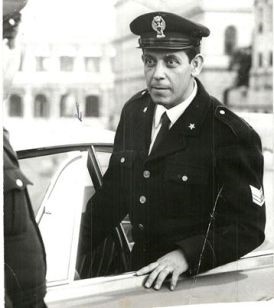
An apparently mild-looking man, famous for the photographic memory with which he recalled the faces of felons, at the wheel of his 200 km per hour fireball, all black but with the writing "Squadra mobile, tel. 555.555" in bright yellow on the sides, became the most feared policeman by Roman crime for his incredible driving skills.

It was almost impossible to escape his Ferrari. Although he was a shy man, he liked journalists, they liked him and he became a popular hero, a symbol of a police that faced, on equal terms, the wild underworld of the boom years. He was cited in newspapers as "the Syracusan policeman who makes hundreds of arrests". He was interviewed, generally sought.

The pairing Spatafora - Ferrari 250 entered the legend, going crazy between December 1962 and 1968 for all of Rome in daring film chases and consequent arrests without being outrun by gangsters anymore, hunting them from the wide suburban avenues to the streets of the center and Trastevere, Via Veneto, via Nomentana, under Saint Peter ("but with the sirens off, so as to not wake the Pope up...").


The prancing horse has turned into a panther, hunting for runaway cars every night. The whole city talked about the Ferrari, loved it or feared it.

“Se vai in giro a tarda sera, occhio sempre alla pantera! Ma se esci a tarda ora, occhio amico a Spatafora” (if you go around late at night, always watch out for the panther! But if you go out late, watch yourself around Spatafora, friend), so recited an article in the Rome newspaper" Il Tempo "of October 4, 1964.
For the nouvelle vague of Capitoline crime music has changed. Spatafora has become its nightmare but the simplicity of the man, combined with the legendary driving skills, made it possible to establish a strange relationship, almost of esteem, of the criminals towards the Brigadier / pilot.
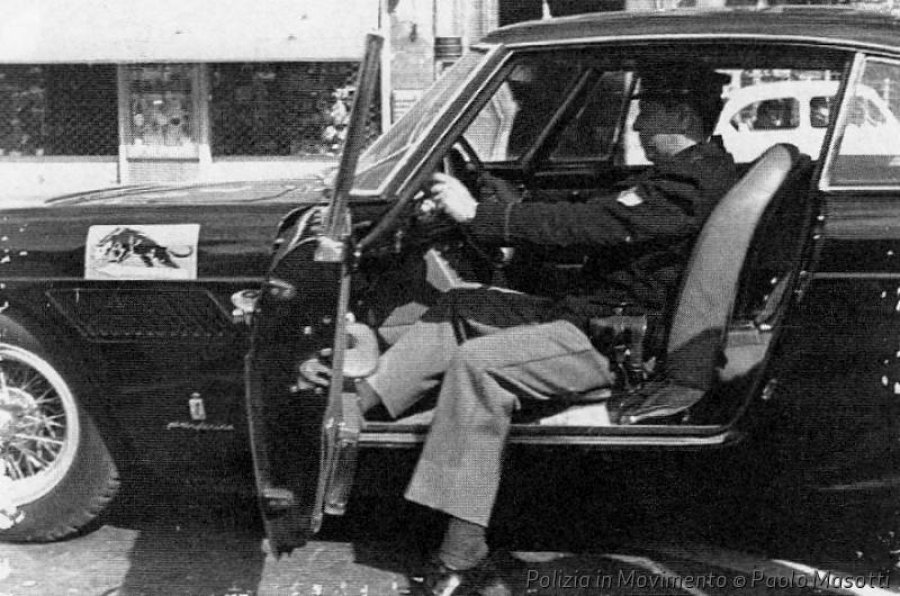
A story told in a thousand different ways began to go round, a story with daring implications which, however, has never found an official confirmation from the Ministry and therefore has covered itself with a halo of legend.

One night in March 1964, near Piazza Navona, Spatafora passed a red Alfa Romeo 2,500 that accelerated as soon as it noticed the Ferrari. The Brigadier immediately recognized the man driving, he was an elusive and well-known car thief, known in the environment of gangsterism like "Lo Zoppo" (the Cripple); at his side there was another criminal known like "Il Pennellone" (a very tall man) (someone instead spoke of a mysterious "Marseillaise" driving a Citroen). The chase began between screeching tires, countersteers, hand brakes, driftings and the piercing scream of the siren.
“Lo Zoppo” tried to outrun the “Spatafora” by swapping paint and climbing on the sidewalks; they went as far as Ponte Milvio; failing to outrun the Ferrari, "Lo Zoppo" played a final card by throwing himself down the steps of Trinità dei Monti, being sure that Spatafora would have avoided damaging his precious Ferrari.
But the Brigadier didn't think twice and launched himself down the steps to Piazza di Spagna, where the Zoppo’s Alfa stopped abruptly for the damage suffered due to the violent jolts.
The two wanted men were arrested while the Ferrari, for the damage suffered, was sent to Maranello for the replacement of the four tires, the crossbow and the gearbox. It was rebuilt piece by piece and was returned to Armando, together with a solemn commendation.
While they were cuffing him, lo Zoppo couldn’t exempt himself from exclaiming: “brigadiè, ammazza come corri!” (Brigadier, how fast you run!)
It was also said (but perhaps it’s another legend) that Enzo Ferrari, during the tests in Maranello, had asked Brigadier Spatafora to leave the uniform and go racing for him. The policeman, however, would have replied: “no, Commendator. Thanks, but it's a too dangerous job.”
Armando Spatafora was later promoted to the rank of marshal, then retired. He ended his days without fanfare until the day he died on February 26, 1987.

That of Marshal Spadafora was an era in which we ran fast, the underworld sported Jaguar and Alfa, many policemen struggled with the Fiat "Millecento", an "happy" period in which traffic blocks, closings of the historic center and pedestrian areas were still unknown and you could push the pedal to the metal without anyone thinking about taking points off your driver license.

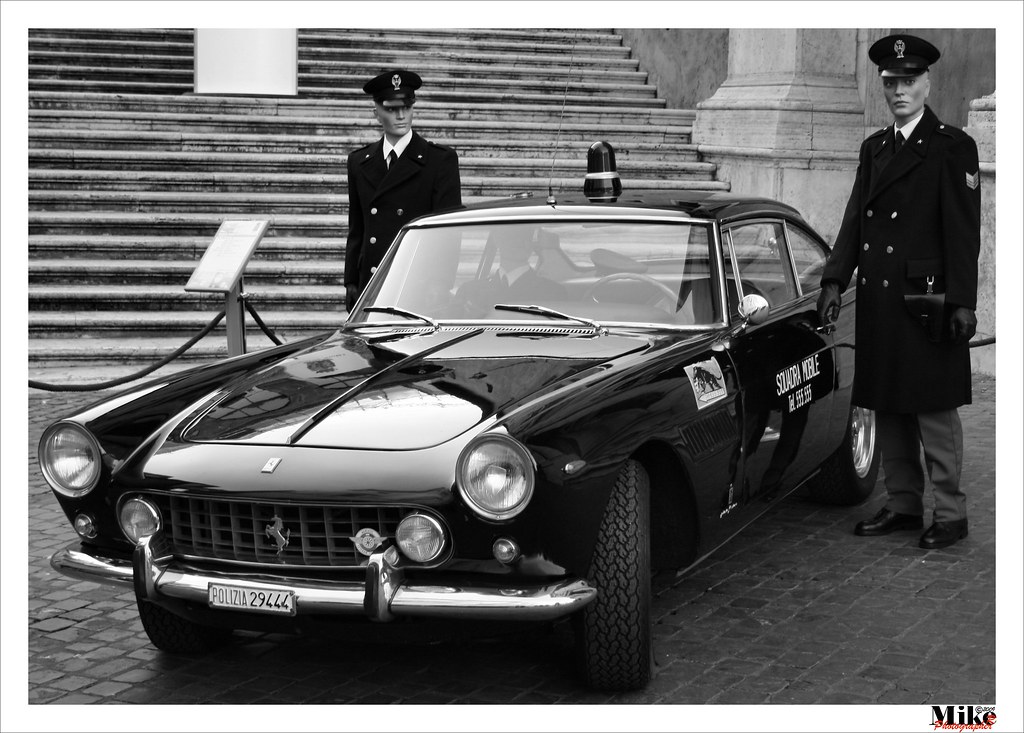
Today's technology and electronics pale in the face of the majestic lines of the Ferrari of the time, when cars didn’t look like appliances, didn't speak Japanese or Korean and still made us dream.
"There were few and rare moments in which he showed tenderness or loving gestures towards us, while remaining an intensely protective and prudent father. A father who was above all a policeman [...] how all this still seems current. Yet the story told belongs to the mythical 60s, when everything seemed protected by an incredible shield of human values and where a strict code of honor imposed on lawmen and criminals a sole imperative: respect for the rules." (Carmen Spatafora talking about her father Armando)
Videos



Comments
Authorize to comment